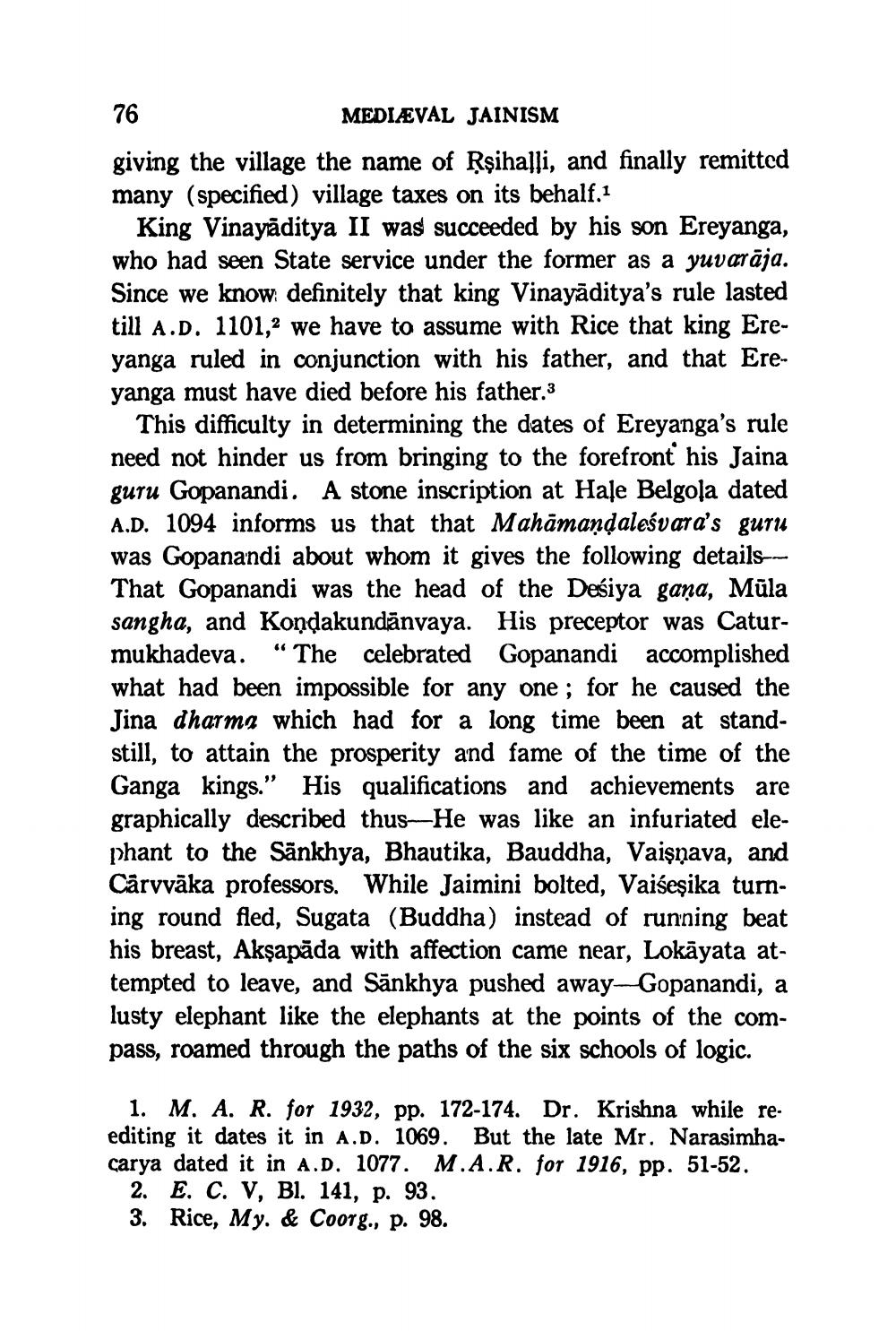________________
76
MEDIÆVAL JAINISM giving the village the name of Rşihalli, and finally remitted many (specified) village taxes on its behalf.1
King Vinayrāditya II was succeeded by his son Ereyanga, who had seen State service under the former as a yuvarāja. Since we know definitely that king Vinayāditya's rule lasted till A.D. 1101,2 we have to assume with Rice that king Ereyanga ruled in conjunction with his father, and that Ereyanga must have died before his father. 3
This difficulty in determining the dates of Ereyanga's rule need not hinder us from bringing to the forefront his Jaina guru Gopanandi. A stone inscription at Hale Belgola dated A.D. 1094 informs us that that Mahāmandaleśvara's gurut was Gopanandi about whom it gives the following details-- That Gopanandi was the head of the Desiya gana, Mūla sangha, and Kondakundānvaya. His preceptor was Caturmukhadeva. “The celebrated Gopanandi accomplished what had been impossible for any one ; for he caused the Jina dharma which had for a long time been at standstill, to attain the prosperity and fame of the time of the Ganga kings.” His qualifications and achievements are graphically described thus-He was like an infuriated elephant to the Sānkhya, Bhautika, Bauddha, Vaişnava, and Cärvvāka professors. While Jaimini bolted, Vaišeşika turning round fled, Sugata (Buddha) instead of running beat his breast, Akşapāda with affection came near, Lokāyata attempted to leave, and Sänkhya pushed away-Gopanandi, a lusty elephant like the elephants at the points of the compass, roamed through the paths of the six schools of logic.
1. M. A. R. for 1932, pp. 172-174. Dr. Krishna while reediting it dates it in A.D. 1069. But the late Mr. Narasimhacarya dated it in A.D. 1077. M.A.R. for 1916, pp. 51-52.
2. E. C. V, Bl. 141, p. 93. 3. Rice, My. & Coorg., p. 98.




